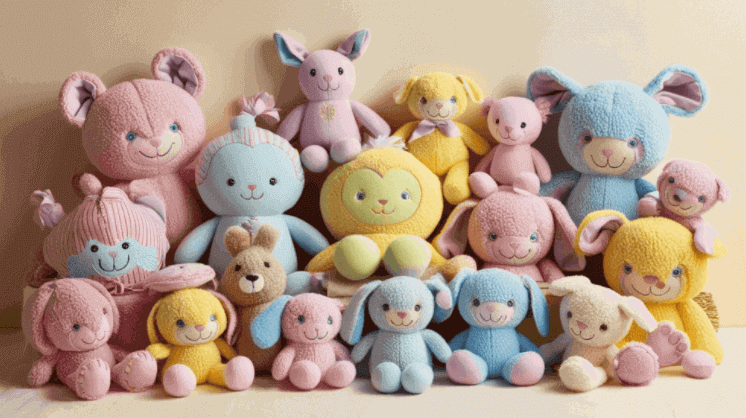Designing for Safety: Expert Guidelines for Plush Toy Production
Discover the essential elements of designing plush toys with safety as the top priority. From rigorous safety testing to strategic design considerations and international regulatory compliance, this article provides a comprehensive guide for ensuring the safety of plush toys in production.
1. Safety Testing: The Journey of a Plush Toy
When it comes to our cuddly companions, safety is paramount. Let’s take a peek behind the scenes at the rigorous testing process that ensures our plush pals are safe for snuggles.
Physical Tests
- Seam Strength: Imagine tugging on your teddy’s arm with all your might. That’s exactly what happens in this test! Machines pull and stretch the seams to make sure they can withstand enthusiastic play.
- Stuffing Security: Nobody wants a stuffing explosion! Testers check that the filling stays put, even during rough-and-tumble playtime.
Chemical Tests
- Material Analysis: Every fabric, thread, and stuffing material goes under the microscope. Literally! Scientists examine these components to ensure they’re free from harmful substances.
- Paint and Dye Safety: Those adorable button eyes and rosy cheeks? They’re tested to make sure the colors won’t come off or cause any harm if they end up in little mouths.
Did you know? Some plush toys even go through a “washing machine test” to ensure they can survive countless laundry cycles!
2. Design Considerations: Safety in Every Stitch
Creating a safe plush toy is an art form. Let’s explore some design features that keep our fuzzy friends safe and sound.
Secure Seams
Picture this: You’re designing a cute little bunny. You’d want to make sure its ears won’t come off, right? That’s why manufacturers use reinforced stitching techniques. Double seams, hidden seams, and strong thread choices all play a part in keeping those ears firmly attached!
Non-Toxic Materials
From the soft fur to the stuffing inside, every material is carefully selected. Hypoallergenic fabrics, BPA-free plastics for eyes or noses, and natural cotton stuffing are just a few examples of safe material choices.
Age-Appropriate Design
Designing for different age groups is crucial. For babies, you might see embroidered eyes instead of button ones. For older kids, you might find more intricate designs with securely attached accessories.
Fun fact: Some designers create “worry-free” zones on plush toys – areas specifically designed for chewing or sucking, using extra-safe materials.

3. Regulatory Compliance: A Global Safety Net
Creating a safe plush toy isn’t just about good intentions – it’s the law! Let’s take a world tour of plush toy regulations.
United States
In the U.S., the Consumer Product Safety Commission (CPSC) is the big boss of toy safety. They have a whole rulebook called ASTM F963, which covers everything from flammability to choking hazards.
European Union
Across the pond, the EU has its own set of rules. The CE mark you see on toys? That’s like a safety passport, showing the toy meets all EU safety standards.
China
China, where many of our plush pals are born, has its own national standard called GB 6675. It’s pretty similar to international standards, ensuring toys made in China are safe for kids worldwide.
Global Harmony
Isn’t it nice to know that countries around the world are working together to keep our stuffed friends safe? Many manufacturers follow a mix of international standards to ensure their toys can be loved by children globally.
Remember: Even with all these regulations, nothing beats adult supervision during playtime!
Creating a safe plush toy is a labor of love, combining creativity with careful consideration. Next time you snuggle up with your favorite stuffed animal, you can rest easy knowing it’s passed through many caring hands and rigorous tests to earn its place in your arms.
